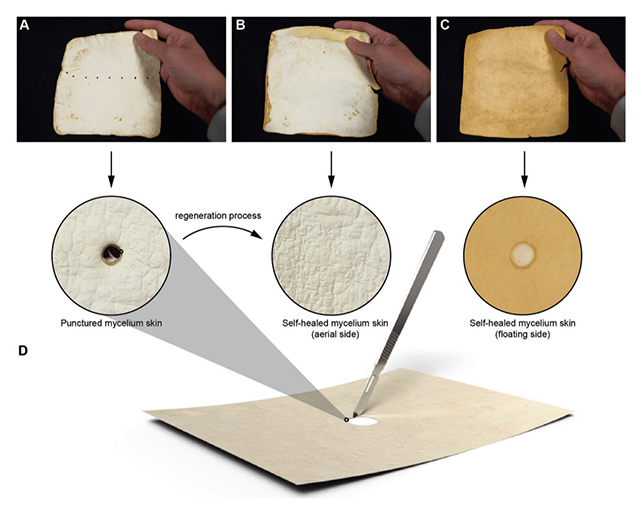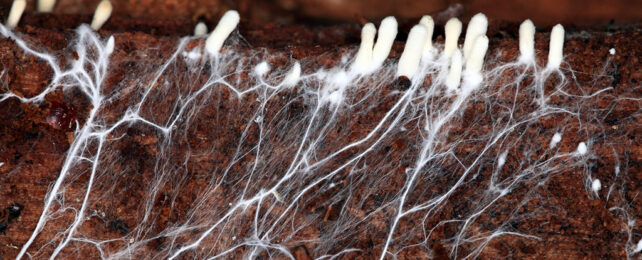A team from Newcastle University and Northumbria University in the UK has found that the thin, root-like threads produced by many fungi can potentially be used as a biodegradable, wearable material that's also able to repair itself.
In their tests, the researchers focused on the Ganoderma lucidum fungus, producing a skin from branching filaments known as hyphae, which together weave into a structure called a mycelium.
With a little more work the fragile skins could serve as a substitute for leather, satisfying vegan, environmental, and fashion tastes, though the process of its creation also needs to be sped and scaled up before it can be transformed into next season's jacket.
"The results suggest that mycelium materials can survive in dry and oligotrophic environments, and self-healing is possible with minimal intervention after a two-day recovery period," write the researchers in their published paper.
Mycelium-based materials are already being used in a variety of fields, from construction to textiles. However, the process used to produce these materials tends to kill off the chlamydospores – the fungal spores that help the organism regenerate itself.
A new approach involving a mix of mycelia, chlamydospores, carbohydrates, proteins, and other nutrients in a liquid encouraged the growth of a skin that could be removed and dried. The results are currently too thin and delicate to be turned into a garment, however the researchers are confident it's possible that future innovations could turn it into a tougher skin, possibly by combining layers or plasticizing in glycerol.
Crucially, the production process didn't kill off the chlamydospores, which could be revived to grow fresh hyphae over breaches in the skin.

Tests on the material showed that it was indeed able to replace holes made in it, if it was placed under similar conditions it was grown in. The material was as strong as before, though it was still possible to see where the holes had been.
"The ability of this regenerative mycelium material to heal micro and macro defects opens interesting future prospects for unique product applications in leather-goods replacements such as furniture, automotive seats, and fashionwear," write the researchers.
The team also did some work with the Pleurotus ostreatus fungus, which doesn't have chlamydospores in it. It wasn't able to self-heal in the same way, demonstrating that it was the chlamydospores that gave the material its ability to regenerate.
There's a long way to go here before you'll be wearing clothes made out of fungus. The growing and healing processes take several days to happen at the moment for example, something which could be sped up over time.
However, these are interesting times for what researchers call engineered living materials or ELMs: because of the living cells inside them, they're able to adapt to their environment, and they can be tweaked in all kinds of ways.
"Engineered living materials composed entirely of fungal cells offer significant potential due to their functional properties such as self-assembly, sensing, and self-healing," write the researchers.
The research has been published in Advanced Functional Materials.
